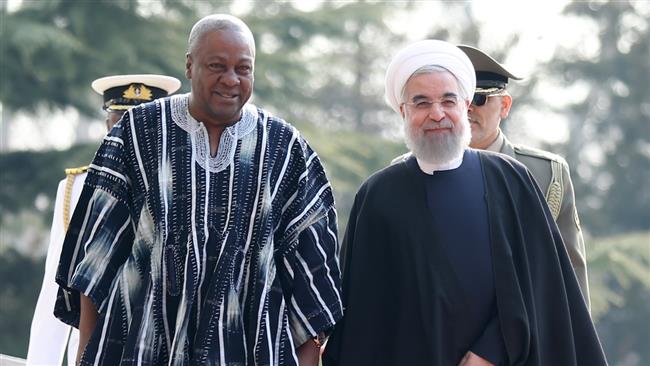The recent lifting of sanctions against the Islamic Republic of Iran has raised hopes for peace and stability in the Middle East. Indeed, the freezing of the Iranian nuclear program could decrease tensions with the West and could open a window of opportunity for improved relations between the two sides. Yet, the agreement does not address the fundamental issue behind western governments’ effort to isolate Iran, namely the country’s regional ambitions and its rise as a geopolitical rival.

Protesters around Shahyad Tower (later Azadi Tower) in Tehran, during the Iranian Revolution in 1979.
Following the 1979 Islamic Revolution, the Iranian regime sought to export its ideology abroad. Therefore, Tehran provided logistical assistance to Hezbollah in Lebanon in order to act as a proxy army against Israel. But Iran’s geopolitical reach was circumscribed by the war with Iraq during the 1980s and the US policy of dual containment in the 1990s. For most of the 2000s, the situation remained unchanged. The US invasion of Iraq and the collapse of the Baathist state allowed Tehran to play a more influential role in Iraq, but not one that could have challenged the US hegemony in the Gulf.
Arab Spring: a game changer
The events of the Arab Spring proved to be a game changer for the Islamic Republic. The overthrow of Arab rulers paved the way for a more assertive Iranian foreign policy in the Middle East. The wave of democratization reached, among others, countries with sizeable Shia communities.
The Islamic Republic has been a self-declared defender of Shia causes. It has therefore constantly supported demands for political reforms in Bahrain, an island with a Shia majority and a Sunni monarchy. The Iranian regime has also harshly criticized Saudi Arabia for the mistreatment of the Shia minority in the oil-rich Eastern Province. The execution of the Saudi Shia cleric Nimr al-Nimr created a diplomatic crisis between Riyadh and Tehran in January 2016. Additionally, the Iranian leadership has supported the Shia-oriented Houthi movement in Yemen, especially after the fall of the Saleh regime.
Besides, the Iranian Revolutionary Guards have provided crucial help to the Assad regime in its battle against the predominantly Sunni armed opposition. Tehran has mobilized Shia communities throughout the Middle East for the protection of the Assad regime, which is largely supported by the Shia sect of Alawites. For example, the Iranian security agencies have recruited large numbers of Afghan and Pakistani Shias to fight in Syria. Consequently, the Islamic Republic has become a major stakeholder in the war-torn country.

Iranian women protest against the execution of the Saudi Shia cleric Sheikh Nimr al-Nimr in Tehran, 4 January 2016.
But this is not all. The fragmentation of Iraq is a geopolitical victory for Tehran because the Saddam regime was a champion of secular Arab nationalism. The collapse of the Baathist state secured the western flank of the Islamic Republic and created opportunities for interference in local affairs. The Iranian regime has attempted, rather successfully, to fill the vacuum after the departure of the US troops in 2011.
The Shia-dominated government in Baghdad has increasingly relied on Iranian aid to deal with the threat posed by ISIS and other Sunni extremist groups. For this purpose, Tehran has sent military equipment and advisors to Iraq. Moreover, it has trained local Shia militants to launch revenge attacks against Iraqi Sunnis. As a result, some of the Iranian-backed Shia militias are beyond the control of the Iraqi government. The Iranian strategy of militia warfare has become more obvious since the arrival of ISIS in central Iraq. As a result, the Islamic Republic has gained a foothold in one of the most important Arab countries.
Short-term gains, long-term costs?
To sum up, Iran has been engaged in multiple fronts across the Middle East to project influence and defend interests. This is a more confident country than it was a few years ago. Despite the low oil prices and the international sanctions, Iran has been transformed into a regional power exerting influence in several countries.
The guiding principle of Tehran’s Middle East policy is Shia empowerment. Therefore, the Iranian regime has patronized Shia parties and militias in a fashion that resembles Moscow’s strategy toward Third World communist movements during the Cold War. In this way, Tehran has used different proxy armies to push back Saudi influence and increase its influence in the region.
Iranian diplomacy has showed little interest for developments in North Africa and Central Asia, where there are only small Shia communities. But the Iranian leadership has monitored closely the situation in northern Nigeria where local Shias have confronted the national army and Boko Haram militants. And it has supported pro-Iranian Shia clerics and groups in Azerbaijan, India and Pakistan.

Iran’s Supreme Leader Ayatollah Ali Khamenei (R) meets Nigeria’s President Muhammadu Buhari in Tehran, 16 December 2015.
The sectarianization of Iranian foreign policy can prove to be a costly mistake. First, Shias constitute a small minority in the Muslim world. It is only a question of time before Iran’s relations with Sunni-majority countries such as Indonesia, Malaysia and Pakistan deteriorate. Tehran is also bound to lose influence among Palestinians, whose struggle against Israel has been at the center of Iranian foreign policy. The Iranian involvement in Iraq, Syria, Bahrain and Yemen has brought the embattled Sunni communities there closer to Saudi Arabia and other Sunni-majority countries like Turkey and Qatar.
On the home front, while it has a huge Shia majority, Iran is far from being homogeneous. There is a Sunni minority that has long suffered from institutional discrimination. Indeed, the Islamic Republic has faced a low-level terrorist campaign from Sunni extremist groups which can now receive help from Tehran’s enemies. In short, Iran’s short-term gains are unlikely to be sustainable.





